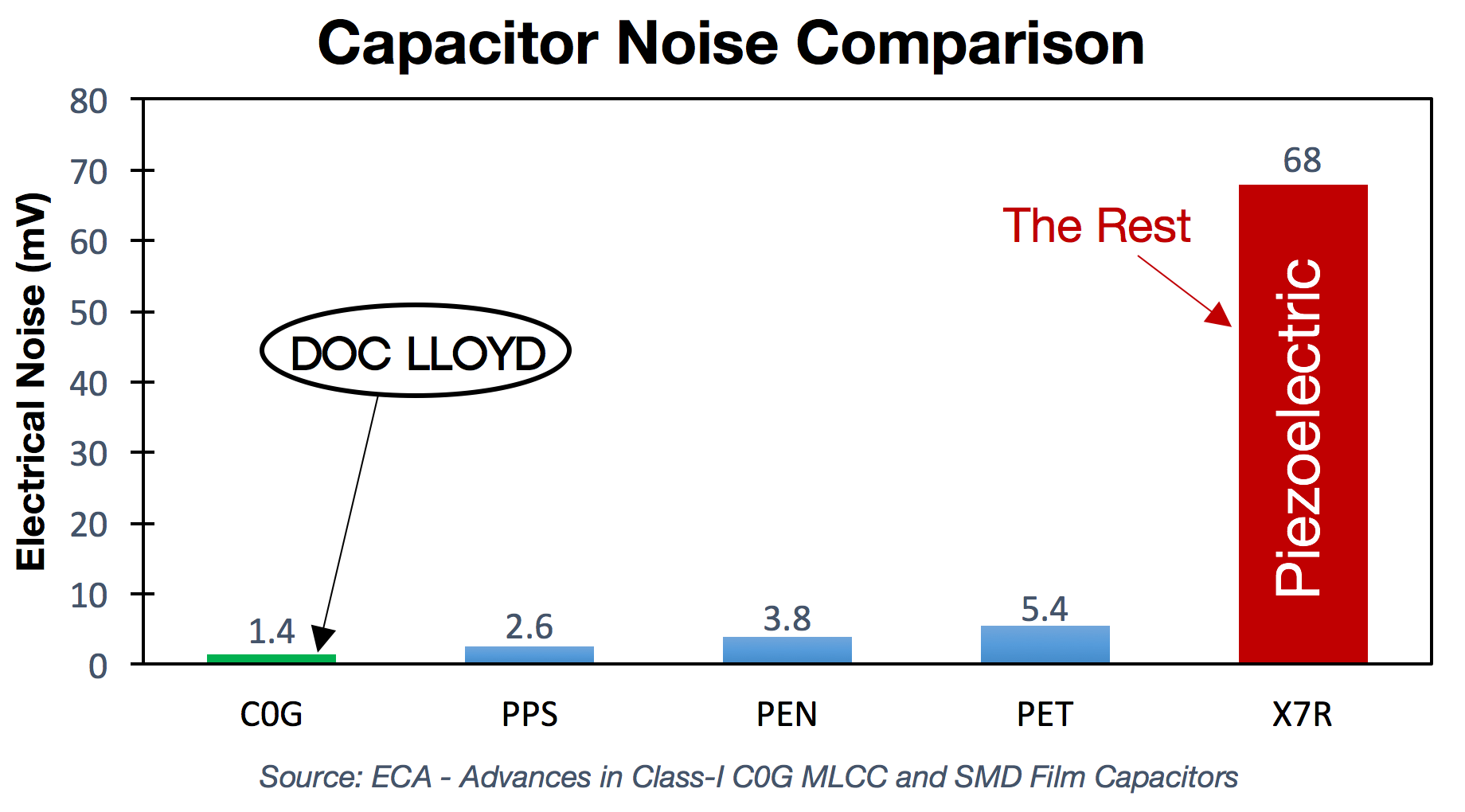FAQ
What is your philosophy on effects pedal design?
Admittedly no one has ever asked this question, but this information has to go somewhere. So...I'm glad you asked!
At Doc Lloyd Audio, effects pedals are viewed as Analog Signal Processors made up of 3 key subsystems: Audio Circuitry, Power Supply, and Bypass System. The audio path is obviously top priority when it comes to design and component selection, but the power supply and bypass system are also key to the overall sound quality, usability, and reliability of the final product that are often overlooked by other effects builders.
Here are some of key features that come standard in every Doc Lloyd design:
Audio Circuitry
Buffered & Low Noise
- DC-coupled discrete JFET input buffer stage for high input impedance and optimal clarity
- Output buffer stage for low output impedance independent of volume setting
- Exceptionally high quality, low-noise component selection:
Burr-Brown series op amps, Switchcraft jacks, Thin (metal) film resistors, Polyester film and C0G capacitors - Hand-wired footswitch and jacks
Power Supply
Clean & Protected
- Active power supply filtering for ripple elimination
- 9-18V operation
- Overvoltage protection up to 24V
- Reverse polarity protection
Bypass System
Quiet & Reliable
- True Bypass using a Relay for highest reliability
- Soft Switch with anti-pop circuitry
- Automatic bypass upon power loss
- Fully analog (no noisy microcontroller)
Where do you get all of your parts? Where do you assemble your products?
All electronic components (includes resistors, capacitors, and semiconductor devices) are sourced from American and Canadian companies. The enclosures are fabricated by an American company and the pedals are assembled by hand in Chicago, USA.
'Merica!
Why do pedal designers brag about Hand-Wiring? Does it really make a difference if jacks are wired or soldered directly to the Printed Circuit Board (PCB)?
Audio difference: Zero. Reliability difference: Massive. When jacks are soldered directly to the PCB, what happens when someone pulls or steps on a cable? The answer is the mechanical stress is transferred to the PCB since the internal connections are rigid. Over time the solder joints fatigue and the electrical connections fail. Hand-wiring creates built-in strain relief and doesn't fall victim to the same issues. If the cable is pulled or stepped on, the wires flex and the solder joints never know what hit 'em.
What is Relay True Bypass? Why is a Soft Switch better than the standard triple-pole (3PDT) stomp switches?
These two features actually go hand-in-hand. It's not the relay itself that makes Relay True Bypass the optimal choice for a bypass system, it's the fact that the 3PDT is eliminated. These switches are the single most common point of failure in effects pedals. Unfortunately, it's not just that some switch manufactures are unreliable; the problem is the actual design used for all 3PDT switches is mechanically complex and unreliable. This is where the Soft Switch comes in. It's a singe-pole, momentary contact switch that is incredibly simple internally resulting in a significant improvement in reliability.
Next comes the relay portion. A single pole switch can't be used to switch both the input and output for true bypass. Instead a circuit is used to sense the switch has been pressed and then controls a relay that switches the input/output. This may sound more complex than the original single 3PDT switch, but every good engineer knows to chose electronic complexity over mechanical complexity when reliability is the goal. The reliability improvement is worth every cent and ensures musicians can rely on their gear night after night, tour after tour.
What is impedance and why should I care about it?
Impedance can be quite complex. Actually, it’s literally expressed as a complex number in electrical engineering, but that’s irrelevant here. I can teach you everything a musician needs to know about impedance as it pertains to effects pedals in 3 simple rules:
- We want high input impedance (1MΩ or more).
If the input impedance is high, the signal won't be affected regardless of whether the source is a passive pickup, active pickup, or another pedal. - We want low output impedance (10kΩ or less).
If the output impedance is low, the signal won't be affected regardless of whether the load is an amp, another pedal, or a mixing console. - Forget about "Impedance Matching".
Impedance matching matters when we are interested in maximum power transfer to something like a speaker cabinet. In the case of pedals, we are interested in maintaining signal voltage, not transferring power. High input impedance and low output impedance maintains the maximum signal voltage and avoids loading (commonly referred to as "tone suck").
Why do you prefer surface-mount technology (SMT)? Isn't the old through-hole technology (THT) superior?
The truth of the matter is that the audio signal doesn't care whether your component has wire leads or not. That being said, the component materials do have an impact on noise and distortion. When pedal designers migrated to surface-mount, they also migrated from low-noise metal film resistors and non-piezoelectric film capacitors to noisy thick film resistors and piezoelectric ceramic capacitors. You might already be aware of the piezoelectric effect since it is utilized in guitar pickups. What this means is piezoelectric ceramic capacitors will translate vibration into an electrical signal. The translation from vibration to electrical signal, then electrical signal back to vibration introduces unintended echo and distortion in audio circuits.
Doc Lloyd pedals use surface-mount components that meet or exceed the noise performance of all through-hole components. All SMT capacitors are C0G and all SMT resistors are Thin Film. Why not use the latest and greatest technology if it is measurably superior? Here's a comparison between the best and the rest for both capacitors and resistors:


